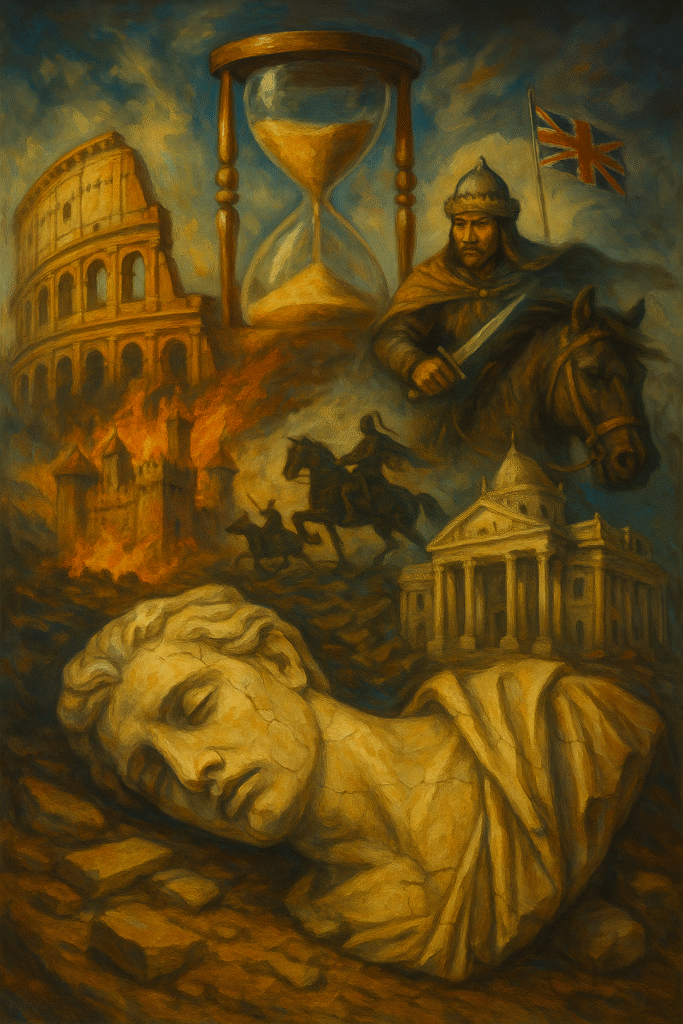Understanding why empires collapse is essential for grasping the patterns that have shaped history. Over time, various empires have risen and fallen, leaving behind lessons and insights into their demise. In this article, we will explore the underlying reasons, historical contexts, and patterns of empire collapse, providing a comprehensive analysis.
The Historical Context of Empires
Empires have existed throughout human civilization, dominating vast territories and cultures. From the Roman Empire to the Ottomans, many have made indelible marks on history. But what does the record of empire collapse teach us?
According to historical analyses, the reasons for the collapse of empires often share common threads. Economic turmoil, political instability, and external pressures are recurring themes.
Economic Factors Leading to Collapse
Economic decline often plays a significant role in the downfall of empires. When resources dwindle or mismanagement occurs, it can lead to pervasive instability. Here are some economic reasons why empires collapse:
* Inflation: Excessive money printing can lead to hyperinflation, diminishing currency value.
* Trade Disruptions: Loss of trade routes can hinder economic prosperity.
* Tax Burden: Heavy taxation can strangle economic growth, causing unrest.
Political Instability and Leadership Failures
Another crucial aspect of why empires collapse involves leadership. Political strife can fragment once-cohesive rule. Leadership impacts empires significantly, as poor decision-making can lead to social discontent and, ultimately, revolt. Consider these points:
* Corruption: Leaders who prioritize personal gain can erode trust in governance.
* Civil Wars: Internal conflict often distracts and weakens empires.
* Failed Alliances: Mismanagement of diplomatic relations can isolate empires, increasing vulnerability.
Patterns of Historical Collapse
By studying the patterns of historical decline in various empires, we can discern common factors contributing to their fall. Notably, many empires have faced simultaneous pressures from both internal decay and external threats.
External Pressures and Invasions
Empires often encounter external threats that can lead to collapse. Invasions by rival states can rapidly destabilize an empire. For instance:
* The fall of the Western Roman Empire was significantly influenced by barbarian invasions.
* The Mongol Invasions dismantled various established empires across Asia and Europe.
Sociopolitical Factors in Empire Decline
The societal structure and political landscape play crucial roles in an empire’s stability. A fractured society can lead to widespread dissent, hastening collapse. Factors include:
* Class Struggles: Widening wealth gaps can lead to unrest among lower classes.
* Cultural Identity Crises: As empires expand, diverse populations can lead to conflicting identities.
Lessons from Fallen Empires
Learning from history provides valuable insights into empire collapse reasons. Here are some significant lessons:
1. Adaptability is Key: Successful empires often adjusted to changing circumstances and embraced innovation.
2. Unity Matters: Cohesion among different social and cultural groups strengthens resilience.
3. Sustainable Leadership: Empires that prioritize the welfare of their people tend to endure.
Case Studies of Empire Collapse
Understanding specific empire collapse case studies can further illuminate these patterns. For example:
* The Byzantine Empire, after centuries of glory, fragmented due to economic pressures and territorial losses.
* The British Empire saw its decline post-World War II, influenced by economic strains and independence movements in its colonies.
Conclusion: Connecting the Dots of Collapse
In summary, exploring why empires collapse reveals critical insights into our world. By examining historical patterns and analyzing factors contributing to downfall, we can better understand potential modern parallels. It encourages us not only to learn from history but also to apply those lessons today to avoid repeating past mistakes.
If you wish to delve deeper into historical patterns, join our community for ongoing discussions that awaken understanding through wisdom and creativity. Explore more about the impact of empire failures on contemporary societies and how they resonate today.
Learn more about the lessons from history.


